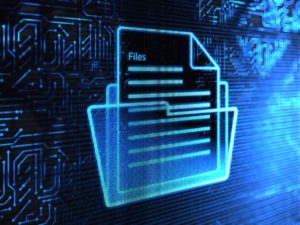Recently, multiple sudden natural disasters have left millions of people stranded on roadways, stranded at work, or left in their homes and unable to leave, and without electricity, All of these sudden floods, thunderstorms, hurricanes, etc. should all serve as a reminder that we have to be ready at all times just in case a disaster does strike. Today’s weather is completely unpredictable, and with the winter season approaching, there are sure to be more unpredictable weather on the way.
Regardless of where your business is located, it is always important to have a full Backup Disaster Recovery(BDR) plan in place. If you have an effective BDR in place, you will be able to effectively respond to any type of disaster that takes place. Whether you currently have a Backup Disaster Recovery(BDR) plan in place or not, we encourage you to ask yourself these questions:
What would your business do if you ever lost access to data?
How long do you think it would take for your business to recover from a major loss?
If you no longer had access to your server, would your business be able to survive?
How much do you think it would cost to recover from the loss?
Many businesses do have a backup solution ready just in case a disaster happens, but not every business will be able to recover quickly when something does happen. If your business loses data or if there is a power outage, it can be difficult for some businesses to restart their operations quickly. For some businesses, the entire operations can be shut down if there is no access to the server for less than two days.
When creating a Backup Disaster Recovery plan, it is very important that you start by making preparations for the worst possible thing that can happen. When you start by preparing for the absolute worse, you should have an easier time resolving the issue when something minor occurs.
Are you making plans to have a telecommuting plan in place just in case your employees will need to access business data from a different location? When your employees who have access to the data can obtain the information when needed, this will keep your business from losing revenue. Your employees will be able to access vital business information from their new location until they can gain access to the workplace again.
When your employees are able to use file sync services and cloud services, all employees will be able to do their jobs despite the disaster that took place. The use of these services and technologies can be the difference between losing revenue and bringing in revenue. When employees are equipped with the services they need while they are working from home or another location, they will be motivated and prepared to get their work done every day, regardless of where they are working from.
A BDR plan can save your business from completely losing everything and closing its doors for good. When you back up your data in off-site locations and other locations, you will have your business operating again in little time. You may also be able to run your business from another location.
Do you think it is time to rethink and reevaluate your current BDR plans? Are you ready to develop a Backup Disaster Recovery plan that will allow your business to continue operating despite what type of natural disaster or accident takes place? For more information on backup and disaster recovery plans, please do not hesitate to contact us today for more information. Our team is here to help your business plan for any unforeseen events.
Tag Archives: Backup and disaster recovery strategy
Backup Disaster Recovery (BDR): Disasters Do Not Take Breaks During The Summer
Summer can bring a variety of things your way, including great weather, long days and nights, and the occasional sunburn. Those things should be at the top of our list of concerns during the summer, right? Unfortunately, there are many other things businesses have to be concerned about during the summer. There always seems to be a major difference between how we think things should be and how they actually are.
Business owners should always make it a priority to backup files so no information will be lost in case there is an unexpected event or emergency. If any information is lost during an event, the files can easily be recovered when you have your files backed up. Unfortunately, too many businesses fail to have a Backup Disaster Recovery(BDR) plan. The commitment to creating a Backup Disaster Recovery(BDR) plan seems to disappear during the summer. We encourage business owners to dedicate some time, energy, and effort into preserving all their data.
You Will Never Know When Disaster Will Strike
Many business owners fail to put as much energy into a BDR plan in the summer because they feel that they only have to worry about certain disasters during the winter or various areas of the year. While the winter does bring its own threats, summer can also have devastating impacts on businesses. Summer brings extreme heat, floods, hurricanes, etc.
Snowstorms can result in power outages, but floods, storms, and heat waves can also result in power outages. If your business is not ready for the impact of a power outage, you can find yourself in a situation that will not be easy to get out of.
It is important for business owners to remember that natural disasters, threats, and the risk of data loss can take place during every part of the year. Natural disasters can have a significant impact on your business, especially due to their ability to increase downtime due to data unavailability.
In addition to natural disasters, hackers do not take breaks during the summer. Businesses are the targets of half or more than half of attacks. As a business owner, you are not able to predict when a disaster will strike, but you will be able to control how your business will be able to make a recovery if a natural disaster or threat to data does strike.
Why Is A Backup Disaster Recovery Plan Important?
Your business’s BDR needs will not be the same as the business’s next door. A BDR will involve multiple processes that will include planning, testing, and monitoring the responses to various types of threats and failures. When you are thinking about taking a vacation to the beach, we encourage you to make some room to think about BDR. It may not be fun to think about now, but if you are ever hit by a disaster, you will be glad you took some time to create a BDR.
You do not want to be added to the list of businesses who lose nearly millions or over millions of dollars trying to recover from a loss of data. Many businesses also have to close their doors for good because they were never able to recover from the data loss. Constantly engage in BDR discussions and ensure that all information that is essential to your business can be recovered easily and quickly.
Disasters and threats can occur throughout the entire year, and it is important that you take the necessary precautions to ensure that losing data will not result in losing your entire business. Contact us today when you are ready to ensure your data will always be available.
The Depths of Your Disaster Recovery Plan
Data disaster recovery is something that every business should be prepared for. Even if your company is never attacked by a hacker or has to face a ransomware system-wipe, it’s important to have a plan in case of pure technical failures and mistakes. You, at the very least, want version backed up version control for your central systems so that a new employee can’t lose a client’s information by accidentally zeroing the values. The ability to retrieve active data from a day or a week ago is undeniably useful. Of course, backing up your CRM and financial data on a weekly basis is only scratching the surface your disaster recovery depth potential. In an ideal recovery, you would be able to completely factory-reset every computer and device on the company network and reinstall your infrastructure, programs, and data all from a single comprehensive backup kept on the cloud so that local disasters can’t reach it.
Of course, the most practical way to store your backups is based on how frequently they’ll need to be updated or accessed. Things like your operating systems, system configurations, and program installations will only need to be changed when your IT team changes the infrastructure. Then there are big databases including things like client information and inventory that will be accessed and updated all the time. These should have at least recent version control recovery available along with a few periodic older backups. Finally, there are the items you want incredibly tight control over and track every single change along with who made it.
Surface Changes
Active projects, customer service conversation, and anything having to do with money needs to be tracked much more closely than normal backup procedures account for. This is where finely tuned version control comes in. Whether it’s for security or simple collaborative convenience, the most surface-level form of backup are fast-paced changes, sometimes hundreds a day, and often it’s as important to know who made a change as the change itself. These detailed ‘saves’ of your data can be finalized at, say, midnight every night and archived after a week or two.
Document Management Software
While it’s true that digital documents like forms and contracts are technically data, there is a functional difference between your business data and your online documents. For these, you want a high-quality document management system or DMS for short. While your best bet is a system made specifically for the needs of your industry, Google Docs is a good example of a basic DMS. More specialized versions will have faster and more convenient mobile and online access, sorting, permissions, and even digital signature authorization for quick and easy approvals between clients and business partners.
Database Backups
The most standard form of backup is the sort that is taken on schedule, archived on schedule, and almost never thought about. For most people, this is their favorite kind of backup because it can take care of itself with a simple automated program directed at the files you want saved. The easiest thing to back up are databases like the sort that hold customer login data, account information, sales histories, department budget reports, and so on. With an easy to set up backup system, you can allow each authorized employee to designate the files they’d like backed up regularly every night, week, or month.
The purpose of these backups is the core of your restoration plan. In theory, as long as you have your databases and active files backed up, you will be able to restore your business data infrastructure from a complete reinstall of all your enterprise management software on new or factory reset computers with a minimal amount of lost data.
The Deep Infrastructure Backup
Every time you think you have a complete recovery backup plan, remember that technology and achievement rely on innovation. Ask yourself how it could be better, how recovery could be faster, and how you can ensure that no data is lost or damaged in the recovery. One important answer to this question is an infrastructure backup. Normal backups assume that you may have to reinstall your operating system and programs but that’s okay, right? After all, these should all be readily available to you. The problems is if you had special configuration settings to make your settings or automations run correctly, these are harder to get back into place in a timely manner and there’s a possibility your IT team doesn’t have notes on all the changes that will need to be made.
A neat trick to ensure that your recovery is fast and efficient is to do a periodic deep backup of any system that has custom settings or that you want to be brought back online quickly in order to get your employees back in the saddle even before the full recovery is complete. Besides your central systems and network setup, if you have large sets of computers that all run the same setup like customer service workstations, you can take a single backup and restore all the endpoints from there. Just make sure you update your deep backups every time the infrastructure or configurations change.
Recovering After a Disaster
The best thing about having a truly comprehensive backup and recovery plan is that you can theoretically recover every important system in the company quick enough to get your employees back online and your business humming again within hours of a disaster or setup afterward. Ransomware, for instance, that infects your entire network can be effectively eradicated with a full factory reset and a reinstall from the deep backup to the databases right up to the most recent surface changes. For more advice and news on backups and recovery, contact us today!
Archives are Great, Backups are Better (Part 1)
As a business, your data is incredibly important. From your old financial records to your new customer contact information, everything about a modern company is run on computers with digital information. Whether you’ve got everything on local software or host your files on the cloud, having access to your business data is vital to daily functions. While active information might be stored locally where it is easy to open and edit, there are also many instances where you will need information stored in files that are more than six months old. This is exactly the reason why you keep older files available, but where do you keep them and how? Are you archiving old files efficiently, and if you are, are they safe from disasters and data loss? There’s a big difference between archives and backups, and understanding that difference is vital to ensuring your data is right where you need it when special circumstances arise.
Are You Archiving?
Archiving occurs when you store older data in an efficient, tidied, and local fashion. Blogs, for instance, have an archive of articles older than three months that allows you to access old content without assuming that you will want to see it. Archiving can take several forms. The most basic kind of archiving is simply leaving old files to build up in place. This allows them to be easily located and referenced and can be considered a reasonable method if you access the old files quite often.
The second kind of archiving involves re-packaging and compressing the archives into smaller zip or tar files, which reduces them inside and allows them to take up less of your local or rented digital storage space. These compressed archives can have their contents examined and retrieved individually or unpacked again to restore the files in their original positions. The archives can also be moved to a separate folder in your file system to keep your active directories tidy.
The Weakness in Archiving
Archiving is a perfectly good starting place for storing your data, but it is not the most secure from disaster or invasion. While most individuals and many companies use archiving as their primary form of file safekeeping, the method also has some significant weaknesses. An archive only exist on your own systems, in whatever local or backup server or network you control. While this may sound good, think of it from a disaster recovery perspective.
If, for instance, a bolt of lightning struck your office building (or cloud hosting facility) and damaged all the computers. This would cause you to lose all your data, both past and present, with very little hope of recovery. Similar issues arise when a computer or entire network get hacked. Hackers can access your data, steal it, delete it, encrypt it, corrupt it, or simply fill your host machines with malware until they can’t function. In all of these circumstances, your system is at serious risk without recourse.
Before the cloud, archiving was among the most reliable ways to protect your business data and files but times have changed and so has the technology available to take care of your data. Backups, and cloud backups in particular, are now the best possible way to make sure that everything you need is waiting for you even if malware or natural disasters take out your entire local network.
Stay tuned for the second half of this two-part article where we’ll discuss how to use cloud backups to protect you from a wide variety of potential disasters. For more information about why backups or important or how to back up your business files onto the cloud, please contact us today!



